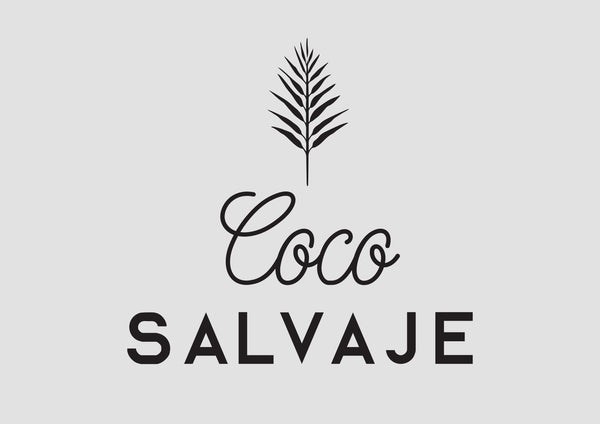Federally Certified Lab
In COCO SALVAJE we like to innovate, and we care about sustainability. So when the time came to design and build our lab from scratch we researched all the alternatives to conventional building and absolutely fell in love with Super adobe technique. Superadobe is a building technique that was developed by Iranian architect Nader Khalili in the 1980s. It involves using long sandbags or tubes filled with earth and stacked in layers to form walls. The bags are then compacted and stabilized with barbed wire or other materials, creating a strong and durable structure. Superadobe structures are typically dome-shaped and can be used for a variety of purposes, including housing, community centers and even cosmetic laboratories.
The benefits of Superadobe construction include its low cost, ease and speed of construction, and ability to withstand earthquakes and other natural disasters. Additionally, the use of earth as a building material is environmentally friendly and sustainable. And it looks super cool.


Use of Earth as a Building Material: Superadobe structures are made primarily from soil and sand which are all natural and readily available materials. This reduces the need for non-renewable resources like concrete or steel, which are energy-intensive to produce and can have a significant environmental impact.
Low Embodied Energy: Embodied energy refers to the amount of energy required to produce and transport building materials. Superadobe has a low embodied energy because the materials used were sourced locally and do not require extensive processing or transportation.
Reduced Carbon Footprint: Building with earth-based materials like Superadobe can help reduce the carbon footprint of construction. This is because soil is a carbon sink, meaning it absorbs and stores carbon dioxide from the atmosphere.
Energy Efficiency: Superadobe structures are naturally well-insulated due to the thickness and density of the earth-filled bags. This can help reduce the energy required to heat and cool the building, making it more energy-efficient.
Minimal Waste: Superadobe construction generates very little waste, as the materials used are often reusable or biodegradable. This reduces the environmental impact of the construction process.
What were the challenges we faced?
In addition to learning the amazing superadobe building technique, we had to ensure that our space would comply with the rigorous sanitary requirements in Colombia.
To achieve this, we brought together an exceptional team, including a chemist who helped us understand the necessary spaces and their interconnectivity, an expert in superadobe who taught us the building technique, and an architect who designed the entire space.
Together, we decided on a layout that consisted of two circular spaces, one for coconut oil production and the other for cosmetics production, connected by a space with a flat roof. This unique design not only met our sanitary requirements but also created a visually stunning and functional space for our production process.




Our architect, Carlos Enrique Santamaria, faced the challenge of creating separate rooms for various purposes such as production, packaging area, storage of materials, quality control lab, and transition area all under the same roof. In his search for a solution, he looked to the Museum of Contemporary Art in Niteroi, Brazil, designed by renowned Brazilian architect Oscar Niemeyer.
Inspired by Niemeyer's work, our architect decided to incorporate a hexagon shape inside our circular building to create all the necessary spaces that support the main happening in the middle - cosmetics production. By doing this, we were able to optimize the use of space and have all the rooms inside one circular building instead of creating multiple circles.
This approach not only allowed us to streamline our production process but also created a visually stunning space that is both functional and aesthetically pleasing.


Originally, we had envisioned a dome-shaped structure where the roof is a continuation of the walls. However, due to the size of the building, a dome with a diameter of 10 meters would have required a height of approximately 60 feet (18 meters), equivalent to a 5-story building, which was not feasible.
Instead, we explored alternative options and decided to use thermoacoustic tiles for the roof. These tiles provide excellent insulation and sound absorption, making them an ideal choice for our needs.
To create a unique and exciting experience for our clients, we also created a flat space between two circles in the roofing. This allows us and our clients to climb on top of it and get a better view of the sloths who live on the trees above the lab. This approach not only provides a fascinating experience for our clients but also demonstrates our commitment to finding creative solutions that work for our unique circumstances.


The whole construction process for this project was completed in just six months, which is significantly faster compared to traditional building methods that involve blocks, cement, and rebar. The walls and roofs were constructed within the first three months, while the remaining work such as plastering walls, building internal PVC walls, painting floors and walls, installing custom-made stainless steel tables, and setting up the electrical system were completed in the subsequent three months.
Our construction method resulted in a space that is not only efficient and esthetically pleasing but also meets the highest sanitary standards. All the surfaces inside are non-porous and easy to clean, complying with the requirements of sanitary authorities. Additionally, we maintain an impeccable order inside the space, with all procedures carefully documented to ensure that all the products we create are safe for our clients.


Our eco-friendly construction perfectly aligns with the values of our brand. Our commitment to creating effective products that are clean and natural is always accompanied by a strong consideration for the environment. By using sustainable materials and techniques in our construction, we are demonstrating our dedication to the planet and reinforcing our brand's mission to make a positive impact.


